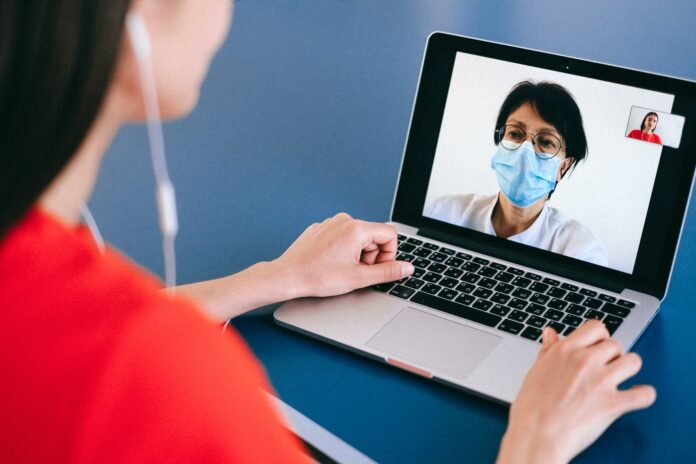In recent years, telecommunication technologies have paved their way into the healthcare sector, allowing patients to engage with healthcare professionals digitally. Regardless of their location, healthcare professionals can now monitor vital signs, conduct medical visits, and perform checkups online, thanks to the internet. While this technology was initially introduced to help make healthcare more accessible to people living in rural areas, it has provided numerous other benefits. As a result, healthcare has become more convenient for both professionals and patients.
It’s not surprising to see the demand and popularity of this technology rapidly rise in the healthcare sector, especially during the recent pandemic. We can safely admit that the future of healthcare lies in telehealth technologies. So, to help you prepare yourself for the future of healthcare, here are some benefits of telehealth for the healthcare sector and its patients.
Lowers costs
Healthcare visits can cost a lot, especially when there’s a need to visit clinics frequently. In contrast, telehealth meetings are significantly more affordable and help patients combat increasingly expensive healthcare. During a telehealth meeting, everything occurs digitally, cutting the costs of travel and parking. In addition to this, telehealth consultation fees are also considerably lower. More importantly, telehealth visits don’t require patients to take time off work to travel to a healthcare facility, saving a significant amount of money. However, telehealth lowers costs for not only patients but also the entire healthcare system. Using telehealth technologies, healthcare workers can communicate with their patients online, limiting healthcare system costs, including readmission and examination costs.
A Towers Watson study even stated that telehealth could save up to $6 billion annually in healthcare costs. Such staggering figures are enough to convince healthcare organizations to reap the benefits of telehealth and train their staff to leverage its full potential. Whether doctors, nurses, or healthcare administrative workers, everyone can utilize telehealth to boost workplace efficiency. But, managing and using telehealth tools is no easy feat, which is why healthcare workers should consider upskilling themselves. Upskilling will allow them to become well-versed in all the advanced technological procedures and innovative techniques used in the healthcare system. For instance, family nurse practitioners can opt for an online DNP-FNP program to enhance their knowledge base and hone new skills relevant to their field.
Such online educational programs provide exposure to the latest transformations occurring in the healthcare sector while instilling essential skills in nurses.
Improves healthcare accessibility
One of the most remarkable advantages of telehealth is how it has improved healthcare delivery to inaccessible regions. Before the arrival of telehealth, people living in rural areas were unable to receive the medical care they needed to overcome their illnesses. As a result, many individuals had to suffer severe issues. What’s worse is that inaccessibility to healthcare was further worsening as the number of rural hospitals was declining. According to Forbes, 1 in 4 rural hospitals are still at risk of shutting down. Nonetheless, telehealth has allowed people living in remote areas to connect with healthcare professionals instantly and receive quality healthcare services remotely. Even if there aren’t any hospitals nearby, patients can still receive healthcare by contacting any healthcare facility in their country.
Telehealth has also improved healthcare accessibility for people with disabilities or severe illnesses. Without telehealth technologies, it can be challenging for people with limited mobility to visit healthcare professionals.
Helps in providing timely care
A concerning issue the healthcare system faces is providing timely care to patients. For example, in emergencies, it is often too late before the ambulance arrives to treat patients. As a result, emergencies can often prove to be fatal. Over 40 patients suffered death or severe harm due to ambulance delays in under three weeks in the East of England alone. Fortunately, telehealth provides an effective solution to delays in delivering healthcare.
In an emergency, patients can remotely contact healthcare professionals through video calls and get immediate care. Unarguably, healthcare professionals cannot physically treat patients through video calls. Still, they can provide crucial medical advice until the ambulance arrives. For instance, a physician may help calm an individual suffering an asthma attack and provide instructions on how to act under such a situation.
Controls contagious diseases
Many patients visiting healthcare facilities suffer from contagious diseases. And this puts healthcare professionals as well as other patients at risk of contracting the same condition. Since it’s immensely challenging to control such diseases, keeping such patients in isolation wards doesn’t help prevent the spread. Moreover, suppose the contagion spreads to chronically ill or immunocompromised people. In that case, it may cause significant health issues, even if it’s just flu. On the other hand, if the disease spreads to healthcare professionals, the lives of countless patients will be at risk as there will be a lack of working professionals.
Fortunately, telehealth proves to be an effective solution for treating and controlling contagious diseases. It’s not surprising that the use of telehealth technologies significantly grew during the COVID-19 pandemic. Healthcare professionals can remotely treat patients with infectious illnesses and effectively stop the disease from spreading with the help of telehealth services.
Reduces stress on healthcare professionals and patients
Healthcare workers often spend entire days at healthcare facilities, constantly meeting with patients. As a result, things get stressful, as physically treating and diagnosing patients can be exhausting for the mind and body. Many healthcare workers face burnout, which is a significant issue in the healthcare industry. However, telehealth provides exhausted and stressed-out healthcare professionals an easy way to work. Using telehealth technologies, doctors and other workers can engage with their patients from the comfort of their homes instead of working in stressful environments.
Moreover, telehealth also makes it less stressful for patients to receive medical care. For example, many patients have agoraphobia and prefer to receive care remotely instead of visiting the healthcare facility in person. Furthermore, patients don’t have to travel through stressful routes to get quality healthcare while using telehealth services.
Conclusion
Telehealth has emerged as a new way to provide healthcare to patients with increased accessibility and convenience. We all witnessed its true potential during the recent pandemic when the traditional healthcare system had collapsed. So, after considering the advantages of telehealth, such as those mentioned above, it’s safe to say that its usage will further increase in the coming years.























